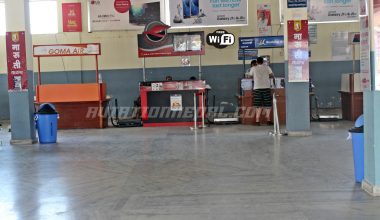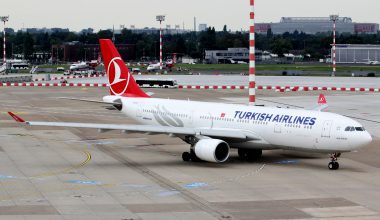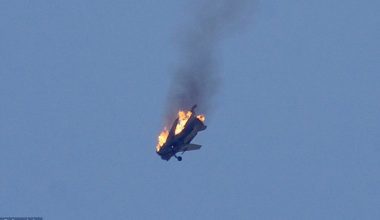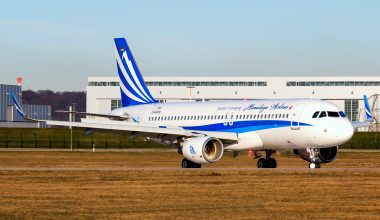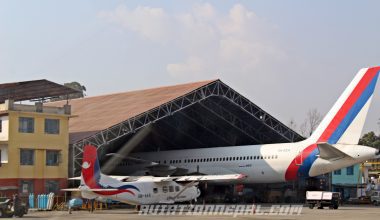It’s not every day that a plane crash occurs. But when it does, there is a very low human survival rate. However, there are some cases where the heroic actions of pilots have helped beat the odds and save hundreds of lives onboard. Nearly two decades before Chelsea Sullenberger successfully ditched a powerless jetliner on Hudson, another flight crew had made a spine-chilling miracle landing. Although not all of the passengers onboard came out of the plane alive, as in US Airways Flight 1549, there were many survivors. This is the tale of the Sioux City Plane Crash on July 19, 1989.

A DC-10 aircraft performing United Airlines Flight 232 crashed in Sioux City, Lowa, following the loss of flight controls. Of 296 passengers and crew onboard, 184 survived the horrific ordeal. Despite losing the plane’s control systems, Captain Al Haynes and his crew made an ‘Impossible Landing’ at Sioux Gateway Airport. The Sioux City plane crash is a tale of mystery and miracles that will forever be etched in the history of the deadliest single-aircraft accidents.
Background of Sioux City Plane Crash
United Airlines Flight 232 was a regularly scheduled passenger service on the Denver-Chicago O’Hare route, destined for Philadelphia, Pennsylvania. On the fateful day of July 19, 1989, United Airlines deployed a McDonnell Douglas DC-10 registered N1819U to serve the flight. The DC-10-10 joined the United Airlines fleet in April 1973 and featured 287 seats altogether in a two-class setup.
On the day of the accident, the flight was almost entirely full, with 285 passengers and 11 crew onboard. The flight crew included Captain Alfred C. ‘Al’ Haynes, First Officer William R. ‘Bil,’ Flight Engineer Dudley J. Dvorak, and eight flight attendants.
Flight 232 took off from Denver’s Stapleton International Airport at 14: 09 local time en route to its first stop at Chicago O’Hare International Airport. As per the planned schedule, the flight would then continue service to Philadelphia International Airport, the final destination. However, the flight didn’t go as per the plan and was destined for something catastrophic.
Uncontained engine failure
For the first hour and seven minutes after takeoff, nothing unusual happened. The DC-10-10 was flying at a cruising altitude of 37,000 feet (11,300 m) towards Chicago O’Hare. At 15: 16, the aircraft encountered an uncontained engine failure of the tail-mounted General Electric CF6-6 engine while making a slight right turn. The fan disk of the rear engine disintegrated explosively, leading to engine failure. The catastrophic explosion in the tail engine resulted in the ejection of the errant fan disk from the affected engine. The flying debris cut all of the plane’s hydraulic lines and penetrated the aircraft’s tail section in multiple places. The engine debris severed and disabled DC-10’s hydraulic system lines.
The plane shuddered violently from the explosion, and the pilots quickly discovered the disengagement of the autopilot system. Upon finding the plane’s throttle and fuel supply controls jammed, the flight crew cut the fuel supply to the tail engine.
Also Read: How many McDonnell Douglas DC-10 ‘s are still flying ?
In the meantime, First Officer Records found that the disintegration of the engine’s fan disk had rendered most flight controls inoperable. The aircraft didn’t respond to any of the pilot’s control columns, as gauges for fluid pressure and quantity in all three hydraulic systems indicated zero. In response to the total loss of hydraulic fluid, the flight crew deployed the DC-10’s air-driven generator. Despite their attempts to power the auxiliary hydraulic pumps using the generator, the crew couldn’t restore hydraulic power.
They radio contacted the airline’s maintenance personnel only to know that there weren’t any backup flight controls in DC-10. As the odds of getting all hydraulic systems damaged were almost impossible, the manufacturer hadn’t established any procedure for such circumstances.
Partially controlled emergency landing
The crippled DC-10-10 oscillated slowly vertically in a phugoid cycle and lost nearly 1,500 feet of altitude in every clockwise circle. Dennis Fitch, a qualified United Airlines captain and DC-10 flight instructor volunteered to assist the crew and entered the cockpit at 15: 29.
Captain Haynes asked Fitch to monitor the plane’s ailerons, to which he reported that they weren’t moving at all. The rupture of all three hydraulic lines led to the total loss of control of the ailerons, horizontal stabilizer, etc. Fitch then operated the throttles that powered the remaining engines while Haynes concentrated on his control column. Talking control of the thrusters, Fitch was able to exert some control over the aircraft’s direction and orientation.
The crew notified the Air Traffic Control (ATC), who organized an emergency landing at nearby Sioux Gateway Airport, Iowa. As the flight crew prepared for arrival at the airport, they discussed two options for landing. The first option was to deploy the landing gear, whereas the next option was to belly-land DC-10 with the gear retracted. With the inoperative landing gear lowering mechanism, pilots elected to extend the gear with the alternative system.
While the plane was originally planned to land at Runway 31, the aircraft control complexities made the runway alignment almost impossible. A series of mostly right-hand turns during excess fuel dumping caused the crippled jet to line up with Runway 22 instead. Runway 22 was 2,112 feet shorter than Runway 31 and was closed permanently in 1988.
In anticipation of Runway 31 landing, all fire trucks were placed on Runway 22. Nonetheless, all the vehicles were quickly moved to vacate the airstrip before the plane crash-landed in Sioux.
Fitch adjusted the thrust of the remaining two engines to control the aircraft’s descent. Due to the complete hydraulic failure, the high-lift flaps couldn’t be extended. In such a scenario, controlling the minimum required forward speed and sink rate was off-limits to pilots. The plane began to pitch forward into a dive and tilted as it crash-landed.
Sioux City Plane Crash
The pilots, assisted by deadheading DC-10 flight instructor Fitch, made a partially controlled emergency landing at Sioux Gateway Airport. The wide-body DC-10 tipped just above the runway, and its right wingtip struck the ground first. The wing broke off, and the spilled fuel ignited immediately. The tail section also broke off on impact, and the fuselage broke into several smaller pieces as the airliner cartwheeled down the runway. At final impact, the main wreckage skidded sideways and rolled over onto its back before sliding into a cornfield at the edge of the airport.
The Sioux City Plane Crash saw the trijet DC10 split into pieces, scattering debris along the runway and nearby cornfields.
Injuries and deaths in Sioux City Plane Crash
The McDonnell Douglas DC-10 performing flight UA232 was fated for the grim end. The aircraft was destroyed as it burst into flames and broke into pieces. However, the crash spared a large number of people onboard. Of the 296 occupants onboard, the death toll was 111, including 110 passengers and 1 flight attendant. Thirty-five passengers in the middle fuselage section directly above the fuel tanks perished from smoke inhalation. Seventy-six passengers (17 in first class) lost their lives due to injuries sustained during the multiple impacts.
One crash survivor with serious injuries died a month after the crash.
Of 184 survivors, forty-five passengers had serious injuries, while one hundred twenty-five suffered minor injuries. The luckiest were 13 passengers who didn’t receive any injury.
Although the United Airlines Flight 232 crash was deadly, 184 occupants survived the horrendous ordeal. Most survivors were assigned seats behind the first class and ahead of the wings. The flight crew in the cockpit also made it out of the crash alive despite sustaining serious injuries.

Factors that increased the survival rate
The highly commendable flight crew performance was the most definite reason behind the many survivors in the Sioux City Plane Crash. Were the UA flight crew unable to perform the emergency landing without conventional control, the survival rate could be little or 0?
Other than the heroic actions of the United Airlines flight crew, several other factors also contributed to the high survival rate. One of the factors is the occurrence of the accident during daylight hours in good weather, which made rescue easy. The presence of more medical personnel in Sioux City during the accident period allowed for faster treatment of the injured. Furthermore, the on-duty Iowa Air National Guard personnel assisted with the evacuation of the injured occupants.
Significance
From the ashes of Sioux City, Plane Crash came forth with some technological developments regarding flight safety. United Airlines Flight 232 ushered in crucial safety improvements, such as incorporating hydraulic fuses to prevent a total loss of hydraulic fluid. The accident also highlighted the importance of crew resource management (CRM) in handling flight emergencies. Other improvements include the change in the titanium manufacturing process to eliminate gaseous impurities, integration of control ability into computers of fly-by-wire planes, etc.
Sioux City Plane Crash is a story of misery and miracle in the history of aviation disasters.


